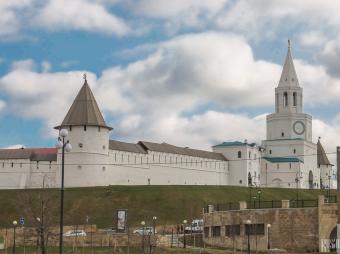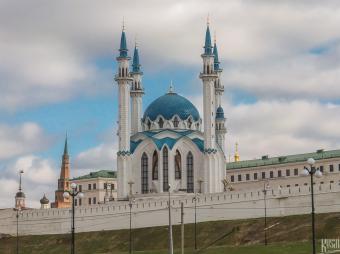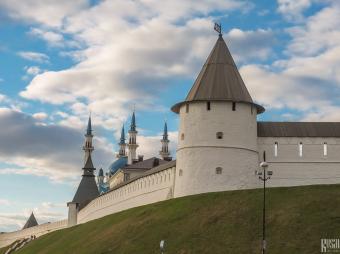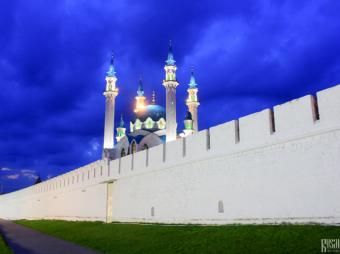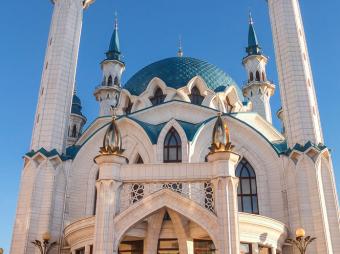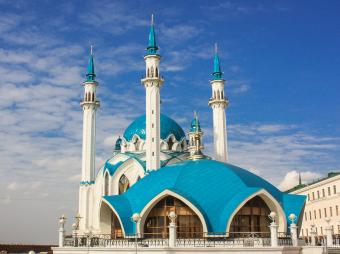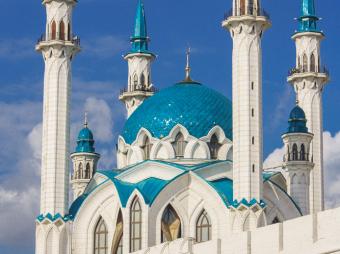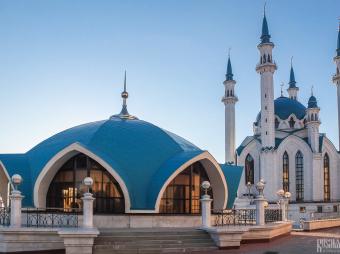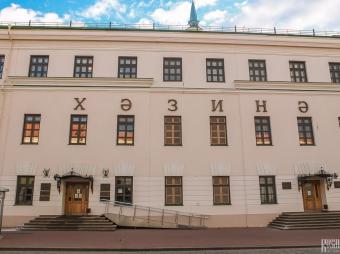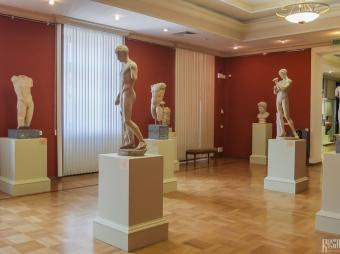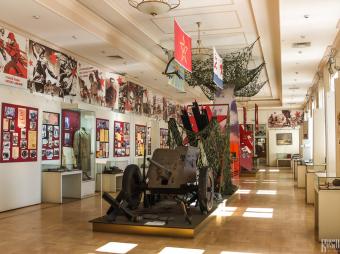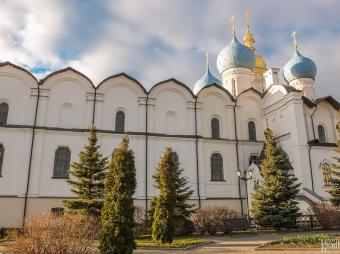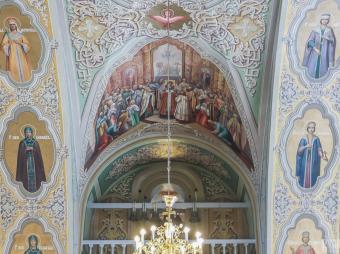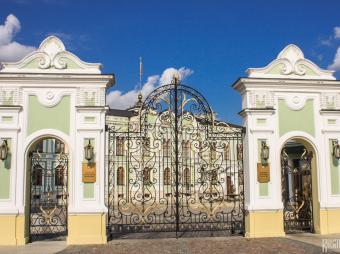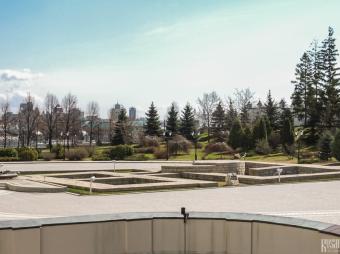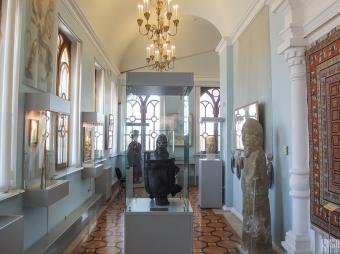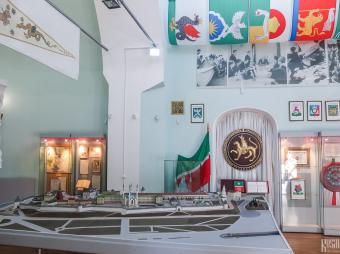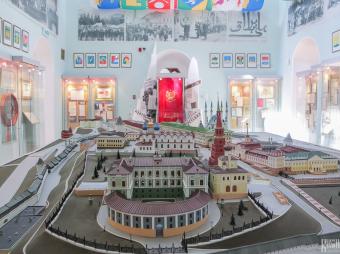Around Ulitsa Kremlyovskaya
Kazan Kremlin
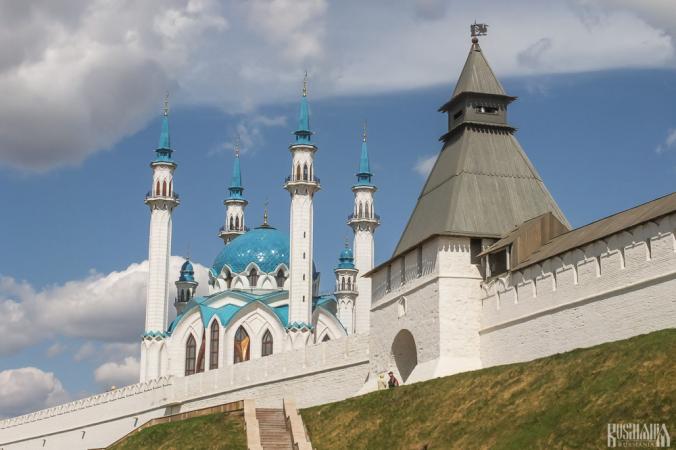
The Kazan Kremlin is located in the centre of Kazan on a high peninsular sticking out into the Kazanka and Volga Rivers. A fortress has been in this location since ancient times but the present kremlin was built on the orders of Tsar Ivan the Terrible after his conquest of Kazan in 1552. Pskov master architects were brought in to construct the 1,800 metres of walls and 13 towers. Today the kremlin is the heart of Kazan and its most famous sight. In 2000 it was inscribed on UNESCO’s World Heritage List.
Spasskaya (Saviour) Tower
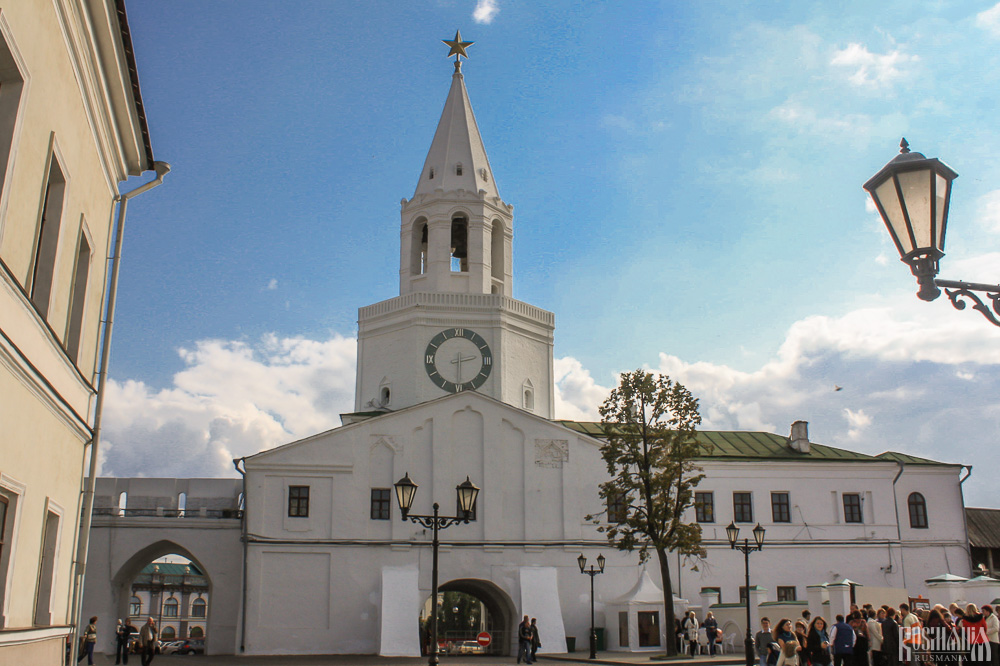
Out of the nine towers of the kremlin which survive today the most famous one is the Spasskaya (Saviour) Tower which serves as the kremlin's main entrance. The tower dates from 1556 but received its present appearance in 1857 when its tent roof was added giving it a height of almost 46 metres. Further changes were made in 1963 when a 2.7 metre gold-coated star and a clock were installed.
Qol-Şärif Mosque and Museum of Islamic Culture
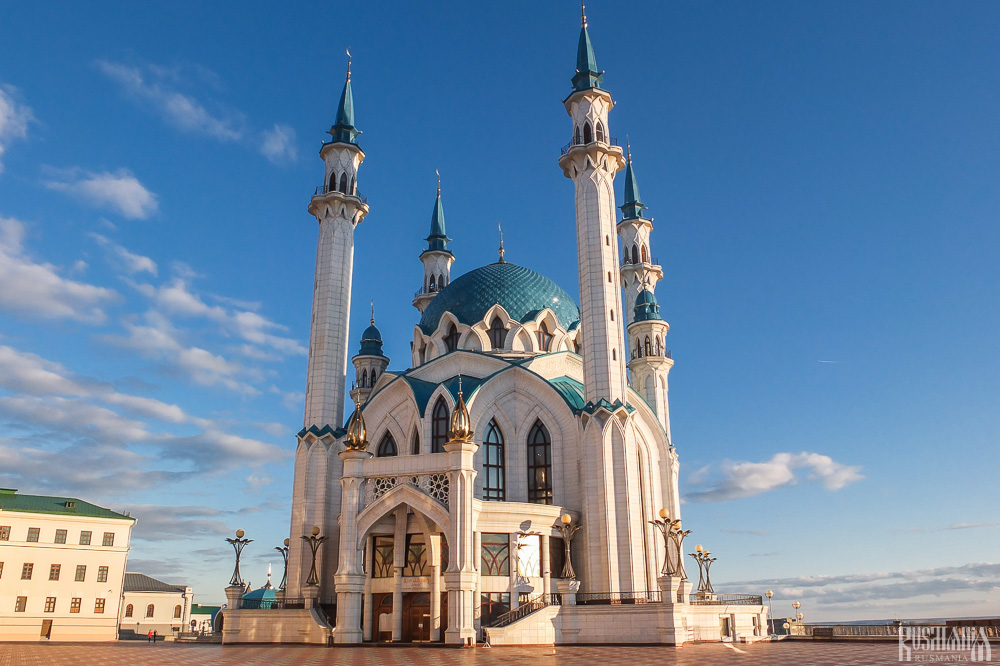
The impressive Qol-Şärif Mosque (also transliterated as Kul-Sharif) is the most important mosque in Tatarstan and one of the largest mosques in Europe. Previously a mosque stood in this location until it was destroyed during Russia's conquest of Kazan. There is even a theory that the design of this original mosque might have inspired the design of St Basil's Cathedral in Moscow which was built to commemorate the Russian victory. The mosque is named after Qol-Şärif, a religious leader who was killed in 1552 whilst defending the city from the Russians. The present mosque was built between 1997 and 2005 and its opening marked the beginning of Kazan's millennium celebrations.
The two ground floors of the Qol-Şärif Mosque house the Museum of Islamic Culture which was opened in 2006 to inform people about Islamic culture. The first floor has displays on the history of Islam, its prophets and it basic principles, whereas the second floor focuses on Islamic civilisation in the Volga Region and the Tatar People.
Museum Complex
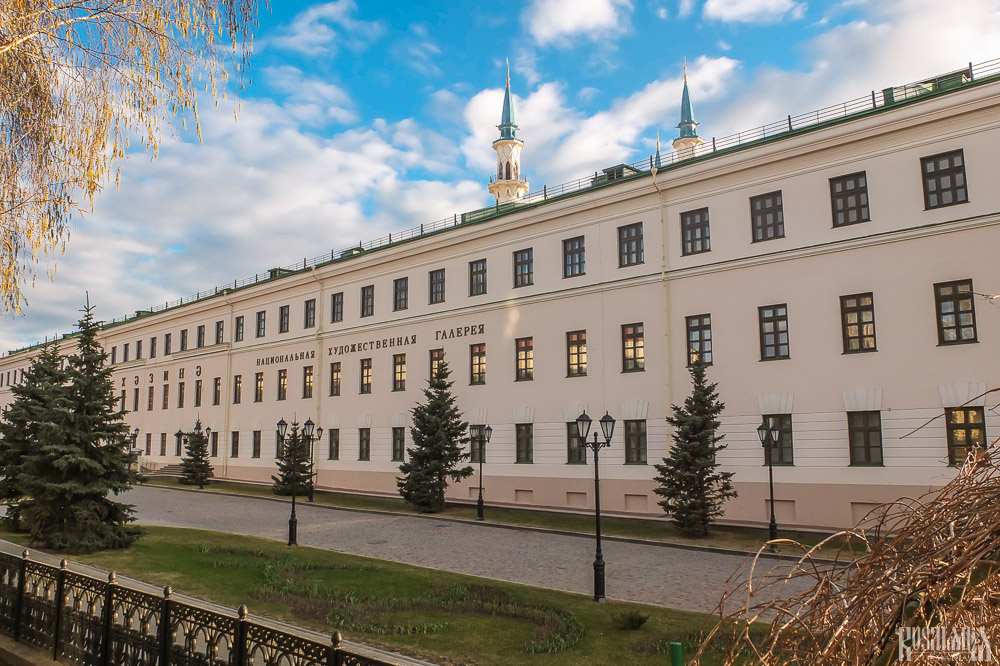
The kremlin's main museum complex is located in what was once Kazan's Military College and consists of four separate museums: the Natural History of Tatarstan Museum, the Great Patriotic War Memorial-Museum, the Kazan Hermitage and the National Art Gallery of the Republic of Tatarstan. The Kazan Hermitage holds temporary exhibitions with items loaned from its partner - the Hermitage Museum in St Petersburg - but of course is pale in comparison to its more famous equivalent.
Annunciation Cathedral
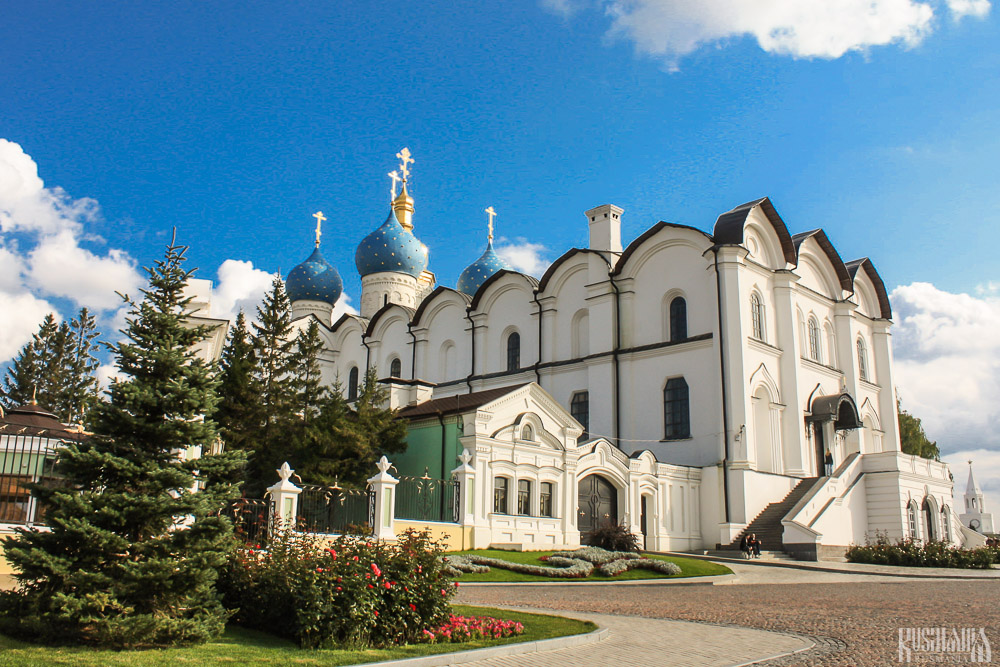
The Annunciation Cathedral is the oldest surviving building inside the kremlin. Immediately after the conquest of Kazan, Ivan the Terrible ordered a wooden church dedicated to the Annunciation of the Virgin Mary to be built near to where the khan previously had his palace. Three years later in 1555 the Kazan Eparchy was established and it was decided to replace the wooden church which a stone cathedral and 80 stonemasons were brought to Kazan to work on it. It was completed in 1562 with the work being overseen by Postnik Yakovlev, who is believed to be the chief architect of St Basil’s Cathedral in Moscow. Previously a bell tower was built onto the cathedral, but this was destroyed by the Bolsheviks in the 1920s after the cathedral had been closed and given over to be used as a museum and archive. After undergoing 10 years of restoration work the cathedral was once again consecrated in 2005 by Patriarch Alexius II.
Monument to the Architects of the Kazan Kremlin
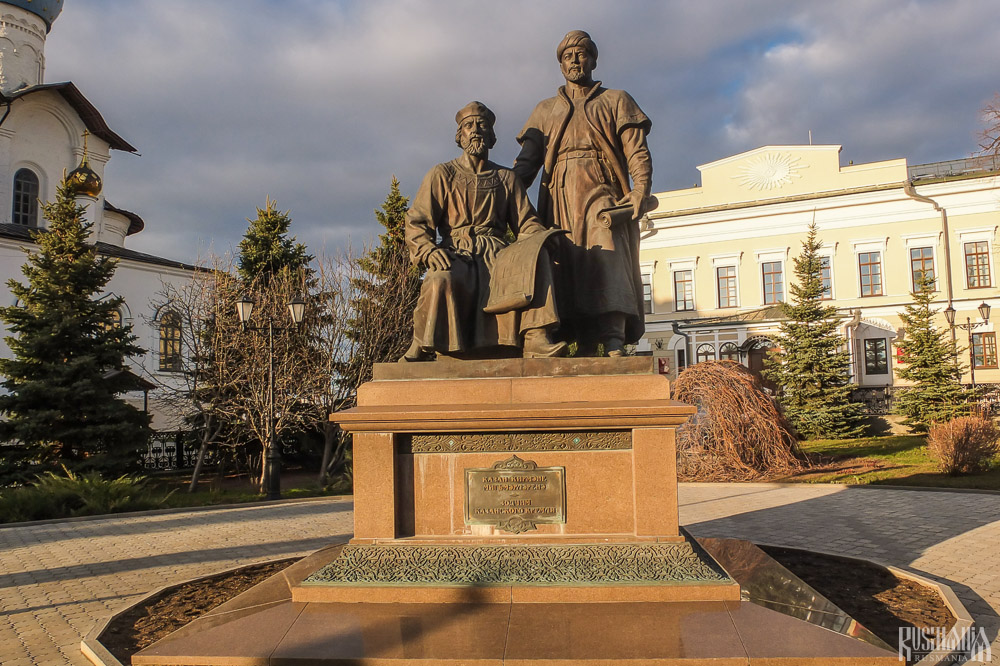
This monument dedicated to the architects of the Kazan Kremlin was unveiled in 2003 in the small gardens outside the Annunciation Cathedral. It depicts two figures: a seated Russian architect wearing mediaeval Russian costume and holding a plan of the kremlin and a Tatar architect standing next to him dressed in the traditional dress of the Kazan Khanate.
Presidential Palace
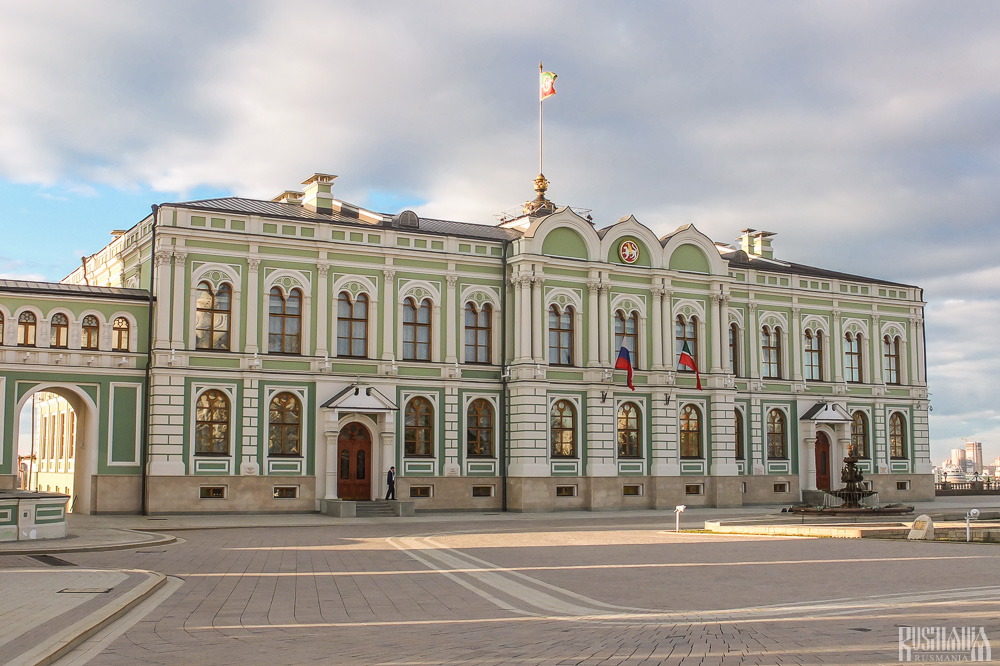
The Presidential Palace in the kremlin serves as the residence of the president of Tatarstan. The palace was built between 1845 and 1848 to serve as the Governor’s Palace and it was renovated between 1999 and 2002. It is located in the same area where the khan of the Kazan Khanate would have once had his palace. In the garden behind the palace you can still see the ruined foundations of the khan's palace.
Söyembikä Tower
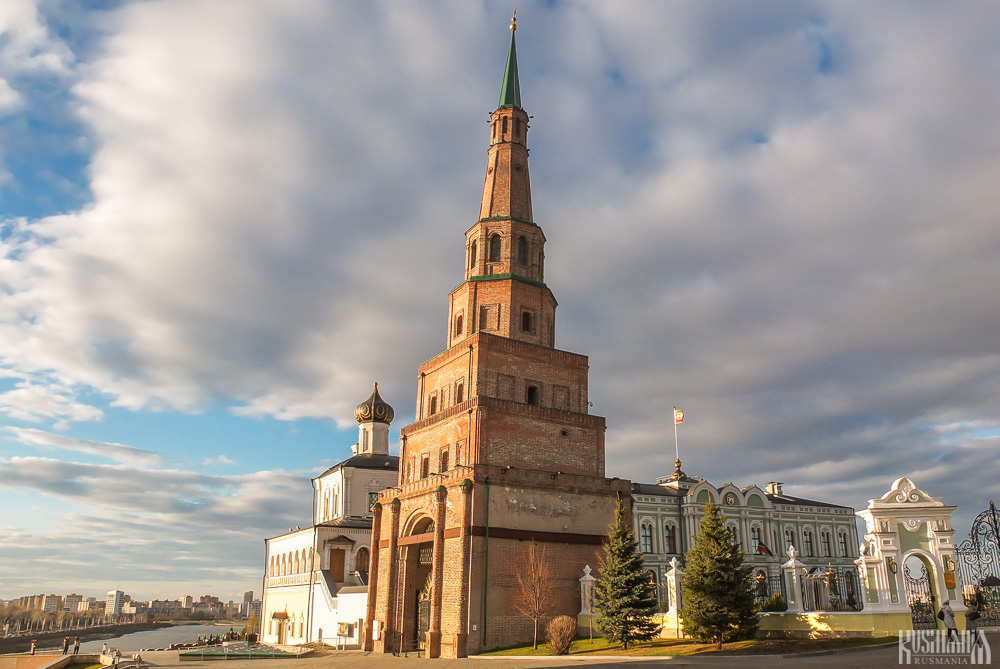
The leaning Söyembikä Tower (also transliterated as Syuyumbike) is one of the most famous sights in Kazan, standing at 58 metres high and with a lean of approximately 1.8 metres. Despite its fame little is known about its origins. Various theories suggest that it dates from the times of the Kazan Khanate of the 16th century, others that it dates from the 17th century. The first mention of it in documents came in 1777. The tower bears the name of Söyembikä who was the wife of three khans of Kazan and regent for her son Khan Ütämeş Geray of Kazan. Legend states that the tower was built for her by Ivan the Terrible, after Söyembikä promised she would marry Ivan if he could build her a tall tower in just seven days. When Ivan succeeded in building the tower, Söyembikä went to the top but instead of fulfilling her promise she jumped to her death. However this is just a legend as Söyembikä in fact ended her days in Kasimov.
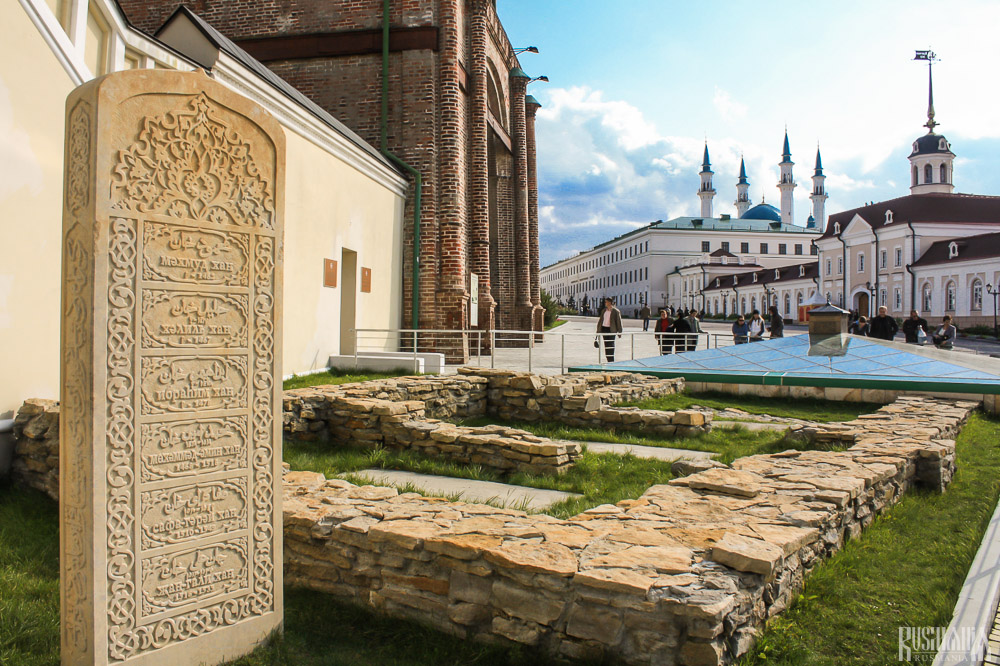
At the foot of the tower are the remains of the Khan Mausoleum, where several khans of Kazan are buried.
Museum of the History of Tatar Statehood and the Republic of Tatarstan
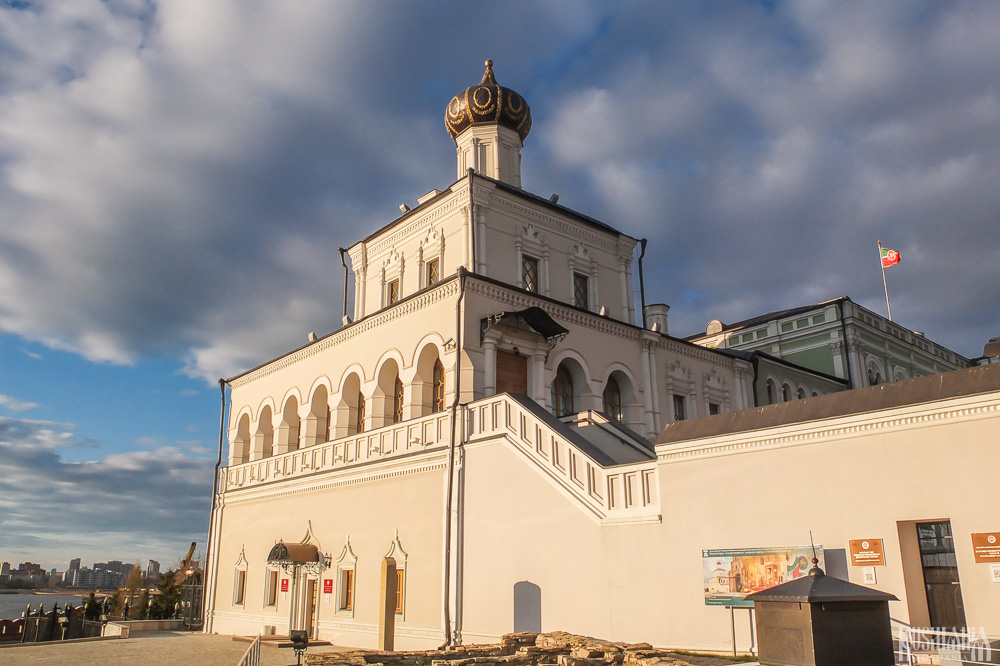
The Museum of the History of Tatar Statehood and the Republic of Tatarstan is located in what was once the Holy Spirit Church, which dates from the mid-19th century. The museum consists of two floors, the first holds temporary exhibitions whilst the second has the museum exhibits. The museum details the various states of the Tatar people starting at the time of Attila the Hun and the First Bulgarian Empire, up to Volga Bulgaria, the Kazan Khanate and then the present-day Republic of Tatarstan. Among the many models and pictures, it includes a model of the Kazan Kremlin as it looks today and images of the kremlin before it was captured by Tsar Ivan the Terrible.
| Location | Ploschad Pervogo Maya |
|---|---|
| Website | http://www.kazan-kremlin.ru |

 History
History